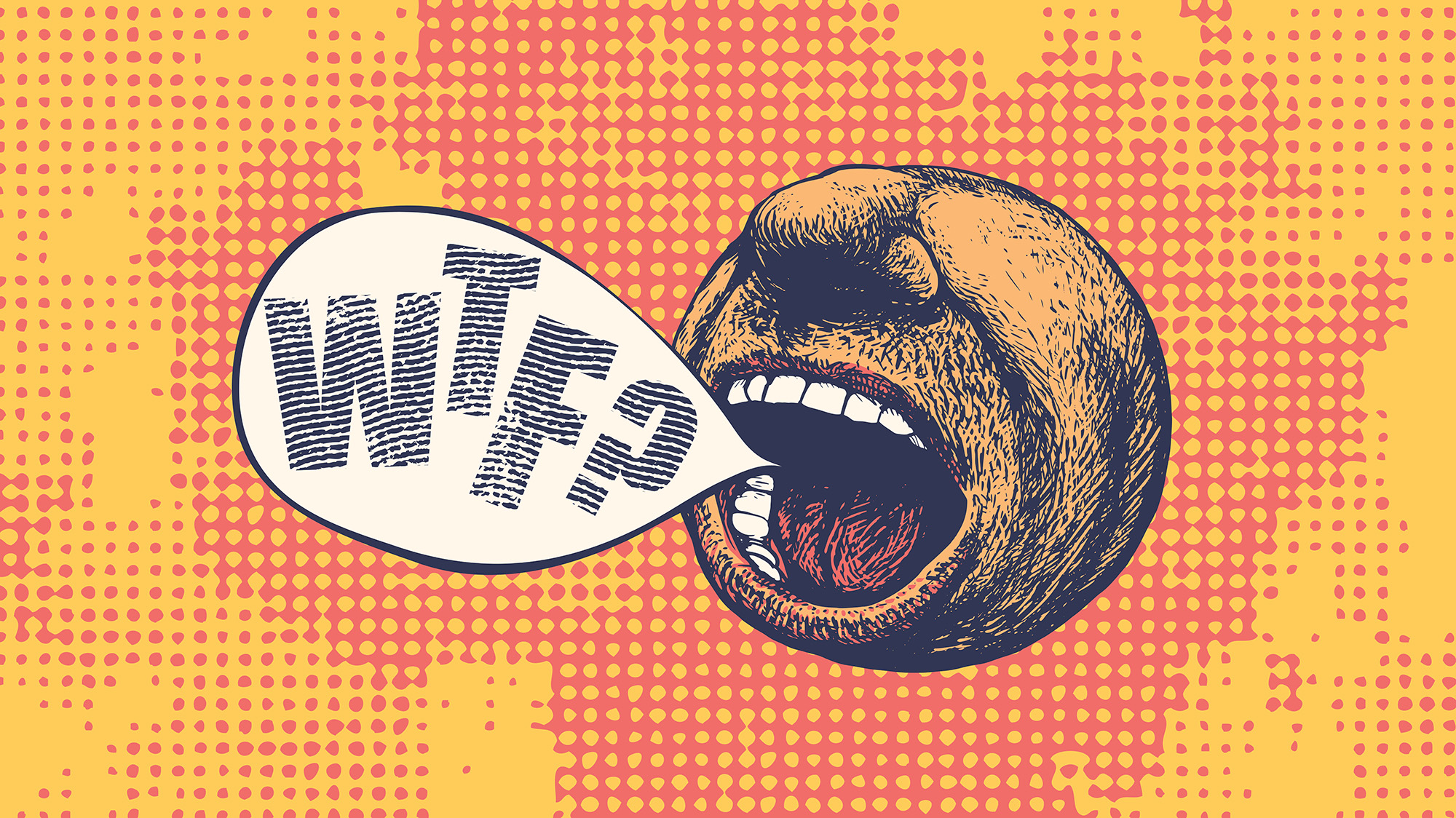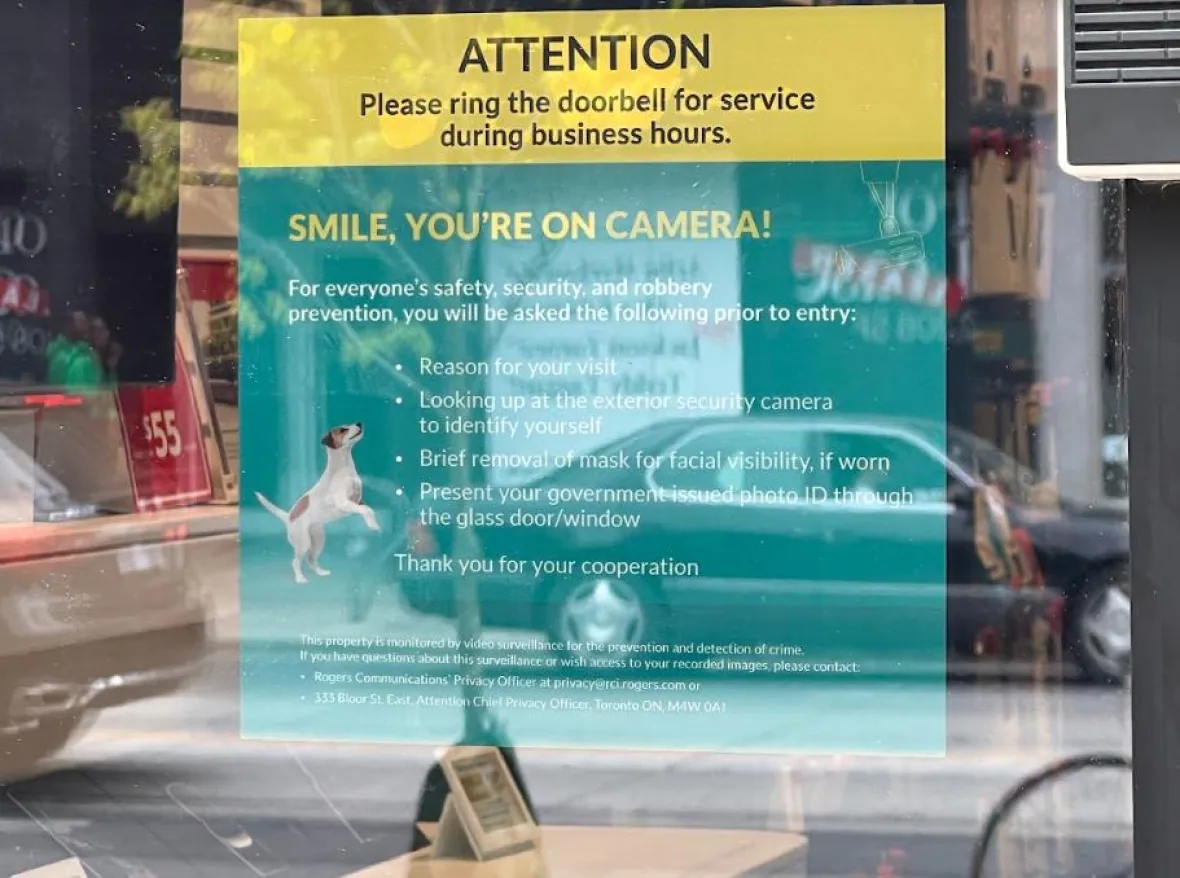
With 2022 coming to a close, it’s time to look back at the wacky news from the past year. 2022 was not 2021 or 2020, but a lot of weird stuff still went down.
Here are some of MobileSyrup’s top ‘WTF-worthy’ stories that shocked Canadians, and in some instances, the world:
‘Will Smith Slap’ NFT collection
Within 24 hours of the 2022 Academy Awards, where actor Will Smith walked up on stage and slapped comedian and actor Chris Rock, OpenSea, the most established NFT marketplace, became home to an NFT collection featuring a total of 1,999 ‘JPEGs’ of the incident with different meme text written on each one.
Yup. Will Smith’s slap has become an #NFT that 719 people have already bought on OpenSea. Each of those NFTs has been selling for an average of 0.0101 ETH or roughly $42 (US$34). pic.twitter.com/wYD3HEjaNF
— Temur Durrani (@temurdur) March 28, 2022
Within the first 24 hours, 721 people had already purchased said NFTs of Smith smacking Rock, with the cheapest NFT listed for 0.003 ETH ($12.89 CAD), and the most expensive listed for 69 ETH ($296,452.79) at the time.
Back then, it wasn’t certain whether the Academy Awards incident was staged or not, and hence, each NFT had either “Team Fake” or “Team Real” written on it, and users could purchase an NFT based on their belief of the authenticity of the event.
The collection was removed from OpenSea, and visiting the collection’s link now displays a 404 error.
Pokémon Scarlet and Violet glitches
Pokémon Scarlet’s and Violet’s rampant game glitches are relatively recent. The title, which was released in mid-November, quickly became a talking point. Not because of the long-awaited title’s release, its gameplay concepts, Pokémon designs or the storyline. Instead, the controversy is due to the game featuring countless bugs, visual glitches and crashes.
The bugs in Pokémon Scarlet/Violet are amazing. pic.twitter.com/0awP4jA4bR
— David Toons (@DavidToons_) November 19, 2022
For a franchise as big as Pokémon, the sheer number and variety of bugs and glitches found in Scarlet and Violet are… astounding. “I experienced a few game crashes and visual hiccups like Pokémon falling off cliffs to their deaths, wild Pokémon walking through my battles, weird evolution glitches that create double Pokémon, ridiculous frame rate slowdowns, weird camera angles, Pokémon getting stuck in walls or the ground, and wall and ground clippings that are especially noticeable when catching Pokémon,” wrote MobileSyrup senior reporter Dean Daley in his review of the game.
This paints a bad look for the franchise. It’s evident that Scarlet and Violet needed a few more months of polish, especially given it’s a AAA-level title in one of the biggest media franchises ever.
Check some of the funniest Pokémon Scarlet and Violet glitches here.
Elon Musk acquires Twitter
Elon Musk acquiring Twitter likely caught you by surprise.
Initially, it was made public that Musk had acquired a 9.2 percent stake in the social media company, worth $2.89 billion USD (roughly $3.6 billion CAD). Back then, Musk was reportedly joining the Twitter board, but that never materialized as he offered to acquire the platform in a deal valued at $44 billion USD ($56 billion CAD at the time.)
On a side note, it was revealed that the Royal Bank of Canada and the Canadian Imperial Bank of Commerce aided in the purchase. Musk reportedly borrowed about $25 billion in loans from 12 banks, out of which RBC pledged $750 million USD (roughly $955 million CAD) and CIBC put up $400 million USD (roughly $500 million CAD), totalling about $1.15 billion USD ($1.46 billion CAD) of the Canadian Bank loans.
Subsequently, due to a concern about Twitter’s bot user count, Musk said that his deal to buy Twitter couldn’t proceed until the company proved that fake and spam accounts make up less than five percent of the platform’s users.
20% fake/spam accounts, while 4 times what Twitter claims, could be *much* higher.
My offer was based on Twitter’s SEC filings being accurate.
Yesterday, Twitter’s CEO publicly refused to show proof of <5%.
This deal cannot move forward until he does.
— Elon Musk (@elonmusk) May 17, 2022
As time passed on, Twitter filed a lawsuit against Musk to force him to make good on his deal to buy Twitter. In the suit, the company’s lawyers said Musk wanted to walk away from the deal because it “no longer serves his personal interests.” Judge Kathaleen McCormick from the Delaware Court of Chancery announced that Musk’s Twitter deal will go to court on October 17th.
Before that happened, Musk revived his buyout offer and asked for some time to get the funding in order, and revealed why he wants to acquire the platform.
“The reason I acquired Twitter is because it is important to the future of civilization to have a common digital town square, where a wide range of beliefs can be debated in a healthy manner, without resorting to violence,” wrote Musk.
Dear Twitter Advertisers pic.twitter.com/GMwHmInPAS
— Elon Musk (@elonmusk) October 27, 2022
Musk completed the acquisition in late October, and the rest is history. You can read the whole chaotic saga of the deal’s aftermath here.
Carrier locks store doors, ask customers for ID to enter
In early September, Rogers started keeping the doors at some of its physical stores locked, and the only way inside was by showing your government-issued ID.
It was in an effort to reduce robberies and fraud.
“The safety of our team members and customers is of the utmost importance to us. Several measures have been put in place over the last few years to improve safety in the stores, including robust training, upgraded cameras, and enhanced door screening policy,” Rogers spokesperson Chloe Luciani-Girouard told CBC Toronto.
Rogers’ July outage
The morning of July 8th was a dreaded one. Rogers’ internet and mobile services went down for customers in Ontario and other provinces.
We know how important it is for our customers to stay connected. We are aware of issues currently affecting our networks and our teams are fully engaged to resolve the issue as soon as possible. We will continue to keep you updated as we have more information to share.
— RogersHelps (@RogersHelps) July 8, 2022
It was later revealed that the outage impacted more than 13 million wireline and wireless customers. 2.9 million customers were wireline (consumers, businesses, etc.), and 10.2 million were wireless customers (postpaid, prepaid, wholesale, etc.). It was also revealed that Rogers Internet Gateway, Core Gateway and Distribution Routers could not communicate between themselves or the company’s cellular, enterprise, and cable networks, which caused the outage.
“With the Core Gateways and Routers impacted, the wireless and wireline networks went offline and were unable to deliver traffic to and from residential and business customers,” Rogers said.
The carrier later offered its customers credit for five days’ worth of service to make up for the massive outage.
While Rogers was trying to make up for its service going down, scammers were having a field day. Several Canadians received phishing messages from scammers posing as Rogers, seemingly offering “compensation” for the outage.
Even the CRTC had to chime in, issuing a warning about an “ongoing scam” regarding the Rogers outage. The commission noted in a tweet that people should avoid clicking links in messages claiming to be from Rogers about reimbursement for the July 8th outage.
Now getting Rogers service outage text message phishing attempts, so that’s great. pic.twitter.com/FqATmgqKFL
— Douglas Tr0n Soltys (@tron) July 9, 2022
Rogers claimed it would implement safeguards to prevent a widespread outage from happening again, like splitting the network. Read more about it here.
Image credits: Shutterstock



